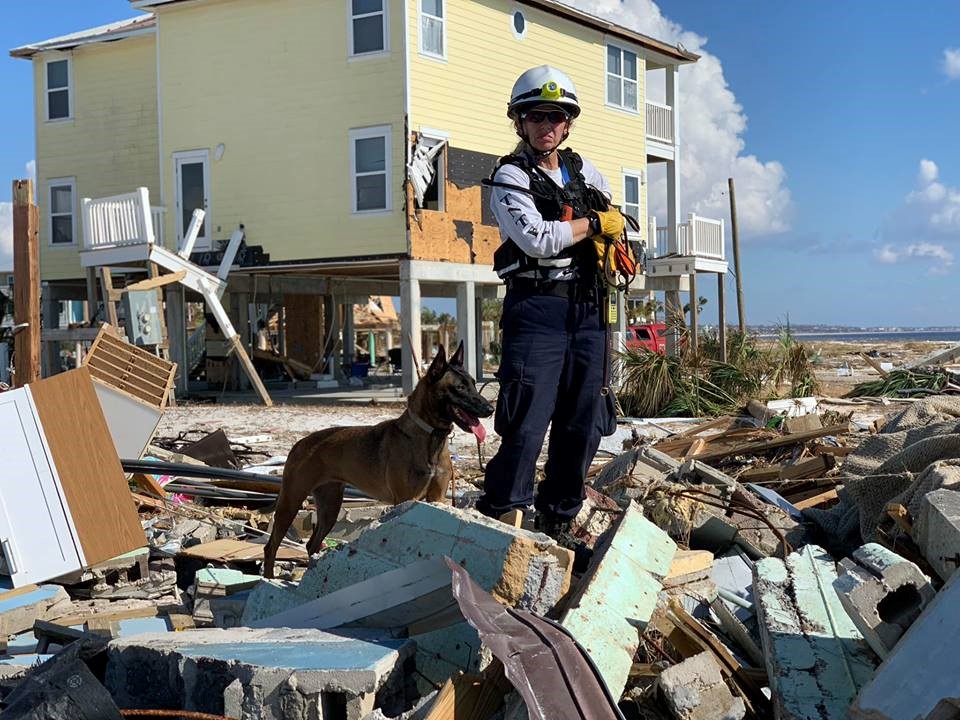
Johnson and her search dog Crush
By Kathy Williams.
On October 10, 2018, Hurricane Michael made landfall in the Florida Panhandle causing catastrophic damage to Mexico Beach and Panama City. The hurricane was the strongest storm on record in the Panhandle and was the third most intense Atlantic hurricane to make landfall in the US in terms of pressure since 1969. The 155 mph winds flattened numerous homes and felled countless trees.
The aftermath of the storm was horrific with streets filled with piles of debris and ruins, power outages, and hundreds of missing persons.
Professor Jackie Johnson and her search dogs Gizmo and Crush were deployed to help find possible survivors trapped in the rubble or bodies of those killed by the storm.
Johnson, a K9 handler for the Federal Emergency Management Agency (FEMA) Urban Search and Rescue Tennessee Task Force 1, spent 11 days helping with search and rescue efforts in Mexico Beach, one of the hardest-hit areas by Hurricane Michael.
Johnson is on call every third month to help if the Task Force is deployed. There are 28 Task Forces in the US and who gets deployed depends on geography, a national rotation, and the rotation within each Task Force. “As individuals, we don’t deploy often, but the team deploys 2-3 times per year to the big events,” said Johnson. “In general, I personally will deploy to a big event every one to two years interspersed with a few local human remains searches.”
“Hurricane Michael was the biggest event I have been to and the most rewarding, the scale of damage was enormous,” added Johnson.
Both dogs Johnson deployed with are certified by FEMA, with Gizmo being a live find disaster dog and Crush being a human remains dog.
The dogs are trained to alert by barking if they are on a search and think they may have found a survivor or body.
“My job on the rubble pile is to point to where the rescue crews should dig and move on,” said Johnson. “I may or may not hear if they found anyone, and I don’t in general see any human remains although we train with human remains and sometimes whole bodies.”
A great deal of the work during the deployment was searching without finding anyone, termed blank areas; they also had some positive finds and were able to bring some closure to the families.
Crush is a Belgian Malinois and belongs to Johnson. Gizmo is a black Labrador and belongs to the Task Force and lives with another handler, but Johnson certified with him so she was deployable while certifying her own dog.
There are fewer than 400 dogs in the US certified by FEMA and Crush was certified only four days before they were deployed to Florida.
Johnson started search and rescue in 2005 with a German Shepherd named Largo as a live find wilderness search dog. Over the years, she has had several dogs and trained a couple for the Task Force.
The dogs go through two years of extensive training to be certified.
She recently certified her own live find disaster dog, a pit-collie rescue named Coco. She is currently training a Malinois/Dutch Shepherd mix named Gabby. “She is a former drug dog, but decided she didn’t like drugs,” said Johnson.
Johnson is honored that she and her dogs were able to help after Hurricane Michael and experience firsthand how all of the training she and the dogs have gone through pays off.